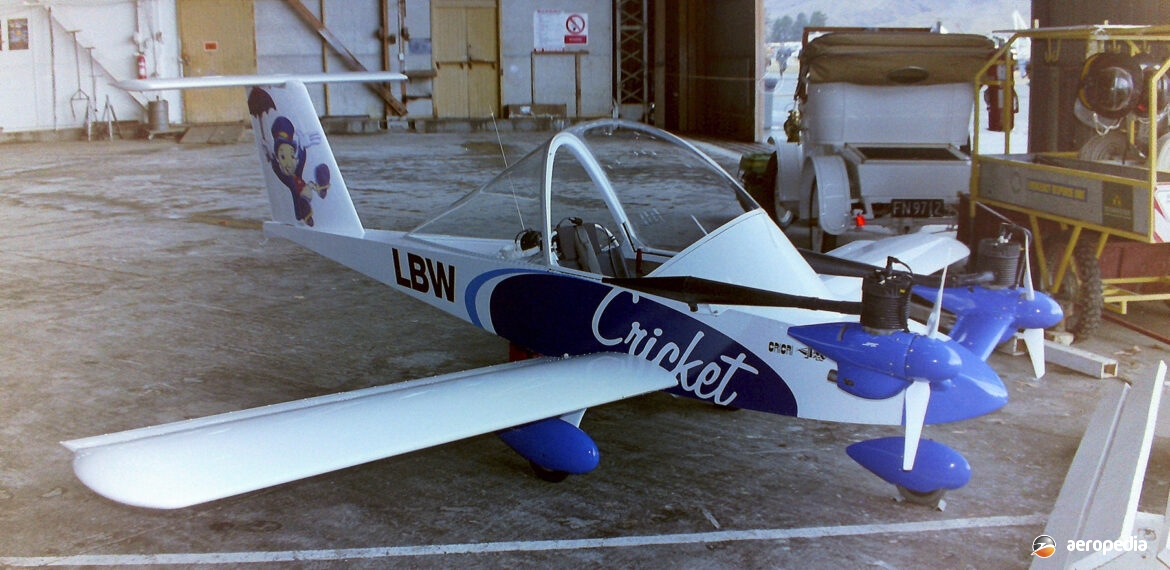Photograph:
Zenair MC-15 Cricket ZK-LBW (c/n 12-0335) at Omaka, New Zealand in March 2005 (David C Eyre)
Country of origin:
Canada
Description:
Single-seat twin-engine light sport aircraft
Power Plant:
Two 11 kw (15 hp) JPX PUL 212 single-cylinder air-cooled piston engines
Specifications:
- Wingspan: 4.9 m (16 ft 1 in)
- Length: 3.9 m (12 ft 10 in)
- Wing area: 3.1 m² (33 sq ft)
- Max speed: 220 km/h (137 mph)
- Cruising speed: 185 km/h (115 mph)
- Rate of climb: 396 m/min (1,300 ft/min)
- Service ceiling: 3,700 m (12,139 ft)
- Range: 463 km (288 miles)
- Empty weight: 78 kg (172 lb)
- Loaded weight: 170 kg (375 lb)
History:
The Cri Cri was designed and developed by Michel Colomban in France, the prototype, known as the MC-10, being flown for the first time on 19 July 1973 powered by two 136 cc Rowena 6507J single-cylinder, two-stroke, engines. It was claimed to be the “smallest twin-engine aeroplane flying” and “the only aircraft able to lift a useful load equivalent to 170% of its own empty weight”.
Subsequently a number of refinements were made to the design and these resulted in two models becoming available, the MC-12 and the MC-15, mainly differing in the type of power plant installed. Development flying revealed the ability to perform some aerobatics, including rolls, reversements, split-S manoeuvres, and inverted flight. Speeds up to 250 km/h (155 mph) were attained.
A variety of small power plants has been fitted, including two 175 cc McCulloch MC-101 single-cylinder, two-stroke, engines; the Valmet 160J engines (with which it was known as the MC-12); and the JPX PUL212 engines (with which it was known as the MC-15). In 1981 two appeared at the Experimental Aircrft Association (EAA) event at Oshkosh in Wisconsin in the USA where they received the “Designers Award”.
At some stage the type was marketed in Canada as the Zenair MC-15 Cricket and supplied to amateur builders. Examples of this model have been completed in Australia and New Zealand.
Overseas examples have been fitted with further engine types. EADS, in association with Aero Composites Saintonge and the Green Cri-Cri Association, built an electric variant shown at the Green Air Show in Paris, France using two brushless motors with counter-rotating propellers. Another, built by Electravia using two electric motors and having lithium polymer batteries, achieved 262 km/h (162 mph). On 9 July 2015 an example flew across the English Channel.
Two of the Zenair variants of the Colomban MC-15 Cricket have been completed in this area, VH-CRI (c/n 12-0078) in Australia and ZK-LBW (c/n 12-0335) in New Zealand. The registration VH-JHP was allottted to a Cricket project with Mr J Plumber bit it is not thought to have been completed.

